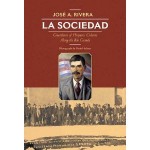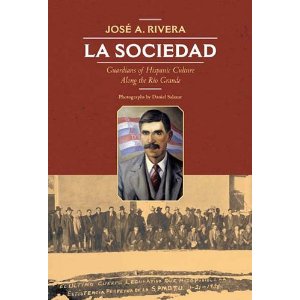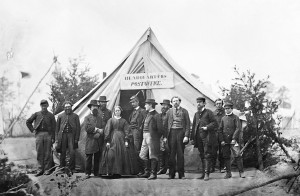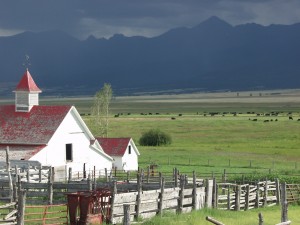La Sociedad: Guardians of Hispanic Culture Along the Rio Grande
By José A. Rivera
University of New Mexico Press, 2010
ISBN 978-0 8263-4894-4
Photographs by Daniel Salazar et al.
Reviewed by Virginia McConnell Simmons
In 1900, led by Celedonia Mondragón of Antonito, his Hispanic neighbors organized the Sociedad Protección Mútua de Trabajadores Unidos, which soon had 65 chapters called concilios throughout rural southern Colorado, northern New Mexico, and a few places in Utah. These buildings once bore, or still bear in many cases, the fading initials SPMDTU for brevity’s sake, as the facades often tended to be small.
 Broadly speaking, the SPMDTU represents secular life in Hispanic settlements of this region during the latter part of the 1800s and the early 1900s. The concilios held meetings with formal agendas and rituals in their own buildings or sometimes in other places like schools, and the hermanos and hermanas also socialized with occasional dances and other activities. It is not a secret organization.
Broadly speaking, the SPMDTU represents secular life in Hispanic settlements of this region during the latter part of the 1800s and the early 1900s. The concilios held meetings with formal agendas and rituals in their own buildings or sometimes in other places like schools, and the hermanos and hermanas also socialized with occasional dances and other activities. It is not a secret organization.
More specifically, the fraternity and its auxiliaries were organized to provide a means for Hispaños to combat the loss of land and wage discrimination and to assist members and their families in the event of death, illness, and monetary hardship, with which many were all too familiar. They also provided a means to obtain insurance policies in a period and region where it was otherwise difficult or impossible to get it. These programs resembled the insurance plans that were appearing in organizations like the Masons or Woodmen of the World at the time. Some of the SPMDTU functions still persist, most notably with the insurance program and mutual aid, despite changes in residence of many members from rural to urban locations and to different occupations. Wherever they are, but especially in the original settlements, they share a strong bond of cultural identity and loyalty.
The reliable information in La Sociedad performs an important service, parting the curtains of understanding for readers who may have known little about this organization. Make no mistake about it, the people who are its members are not recent migrants from across the border nor transplants who moved here from all over the United States yesterday or even a century ago.
Many of us have been privileged to know traditional Hispaños as our neighbors and friends who are the descendants of families with roots going back a century and a half or more and a culture that goes back further. They were the first, or early, Spanish-speaking settlers in New Mexico and in Colorado’s San Luis Valley.
In this book, we can read about them as subsistence farmers, still cleaning out acequias cooperatively each spring. And we can read about those who at one time were owners of their own sheep and cattle, but many of whom soon became herders of cattle and sheep belonging to usurpers of the land, and shearers of other peoples’ sheep. Wage earners performing back-breaking work in wool and potato warehouses and in others’ fields. Workers with low-paying jobs in other people’s smelters and mines at Creede, Leadville, and Trinidad. Workers along D&RG and UP railroad tracks. People who lost land rights on the old grants when newcomers acquired them or the parcels could no longer sustain growing families. Some still own land while others moved to cities and small towns or outliers along country roads. In the 1930s, public assistance programs helped many survive.
Today, many are Roman Catholic. Some are Penitentes. Some are successful business men and women. Some are government workers in towns, counties, states, and federal office. Some are welfare recipients. Some are college and university graduates and teachers, others slimly educated. Some are artists and poets and musicians. Quiet and courteous and proud.
La Sociedad is their book, a priceless sharing about the SPMDTU, written and compiled by the scholar José A. Rivera with the assistance of countless hermanos and hermanas – too many to name here. The book includes an abundance of photographs, introductory material, oral histories, endnotes, bibliography, and an index.
With this book, the Spanish-speaking people of this region have shared the SPMDTU story – objectively, accurately, and intimately – producing a volume that is an important contribution to regional history.



